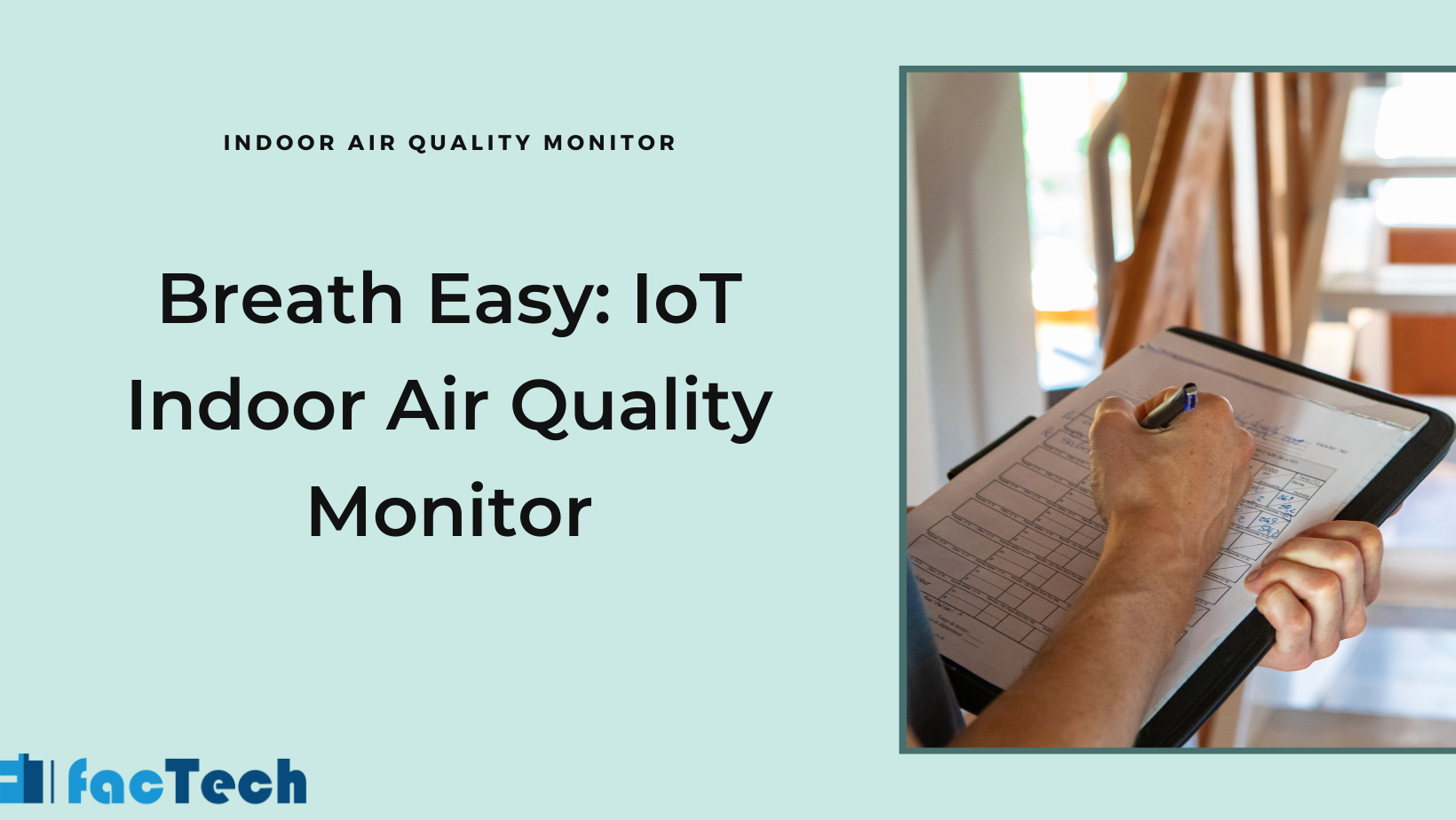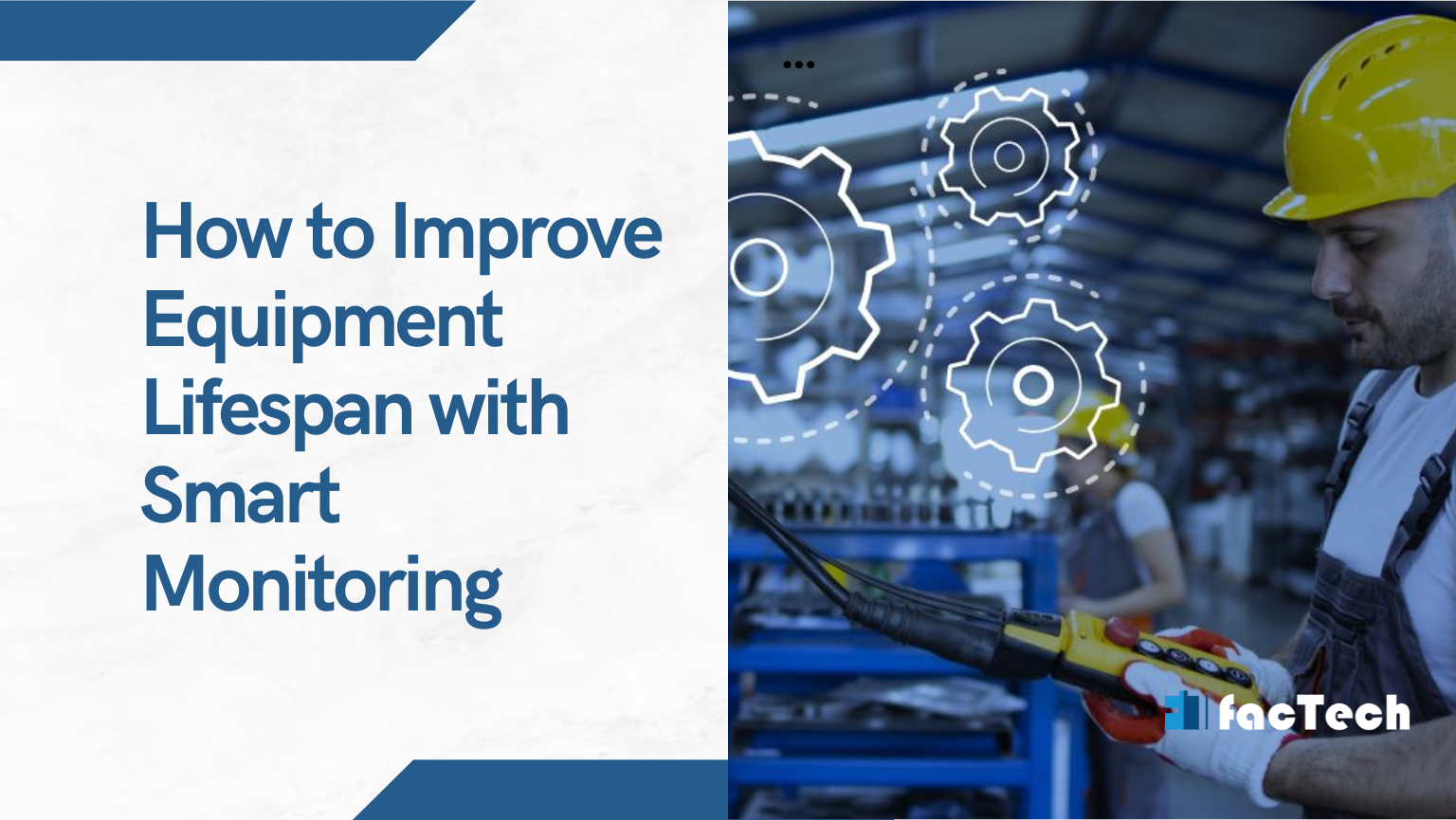IoT Indoor air quality monitor
IoT Indoor air quality monitor
Surprisingly, the air we take inside can be dirty. Indoor air quality (IAQ) problems can be caused by things like not enough ventilation, cleaning products, and even building materials. Thanks to the Internet of Things (IoT), there is a good solution: Facility air quality monitors.
How do you describe an IoT indoor air quality monitor?
An IoT indoor air quality monitor is a small gadget that checks your facility air quality and different pollutants. Usually, these cameras keep an eye on:
Carbon Dioxide (CO2): High CO2 levels can mean that there isn’t enough air flow, which can lead to headaches and tiredness.
Volatile Organic Compounds (VOCs): Cleaning products, paints, and furniture are just a few of the things that give off VOCs. They might make your eyes, nose, and throat hurt.
Particulate Matter (PM): PM is made up of tiny particles in the air that can make breathing difficult. Temperature and Humidity: These affect comfort and can change the activity of mold or dust mites.
How can IoT devices that check the air quality help?
IoT devices give you useful information about your facility’s surroundings by constantly checking these air quality metrics. These facts let you:
Find problems with the air quality: real-time data can show you where pollution levels are rising the most, helping you find possible problems.
Improve ventilation:
Surprisingly, the air we take inside can be bad for us. Studies have shown that the amount of air pollution inside can be two to five times higher than outside . This could be because of many things, including:
#For energy economy, ventilation was cut back.
#Synthetic furniture and building materials
#Chemicals for cleaning and killing bugs
#Everyday things like cooking
Some of the health problems that can be caused by bad indoor air quality (IAQ) are breathing problems, headaches, and feeling tired. Thank goodness, new technology is letting us take charge of our HFs.
How IoT monitors make air flow better
IoT air quality trackers tell you about the air you’re breathing in real time. In this case, you can:
Find the trouble spots: Is the CO2 level in your facility office going through the roof when you’re working? Is there a lot of VOCs in your sitting room now that it’s been furnished? An air quality monitor can show you exactly where better airflow is needed.
Improve methods for ventilation: You can take focused action if you know which pollutants are affecting your air quality. For example, if CO2 is the main cause, it can help a lot to open windows or change how your air system works.
Automate the air flow: Some IoT monitors can connect to smart facility systems and make ventilation changes on their own. If a monitor finds that CO2 levels are too high, it might open a smart vent or turn on a fan.
Building a Healthy Facility: More Than Just Awareness
Indoor air quality monitors that are connected to the internet are a useful tool for making places inside healthier and cozier. These devices can help us breathe better and live healthier lives by giving us useful information and letting us use smarter ventilation techniques.
Do something to lower pollutants: If VOC levels are high, you can find the cause and get rid of it, or you can use cleaning products that are safe for the environment.
Improve comfort levels:
Have you ever walked into an office and felt a strange wave of sleepiness hit you? Or get headaches and irritability in a certain meeting room? These things might mean that the air quality inside is bad (IAQ). IoT facility air quality monitors are a tech-savvy way to fix the problem.
Putting money into your employees is important:
When you buy IoT indoor air quality monitors, you’re not just buying technology; you’re also buying health and well-being for your workers or people who live or work in your building. They will be more productive and engaged if they are in a comfortable, healthy setting. They will also be less likely to have health problems. In today’s business world, that’s a win-win position for everyone.
Other good things about IoT air quality monitors:
Remote monitoring: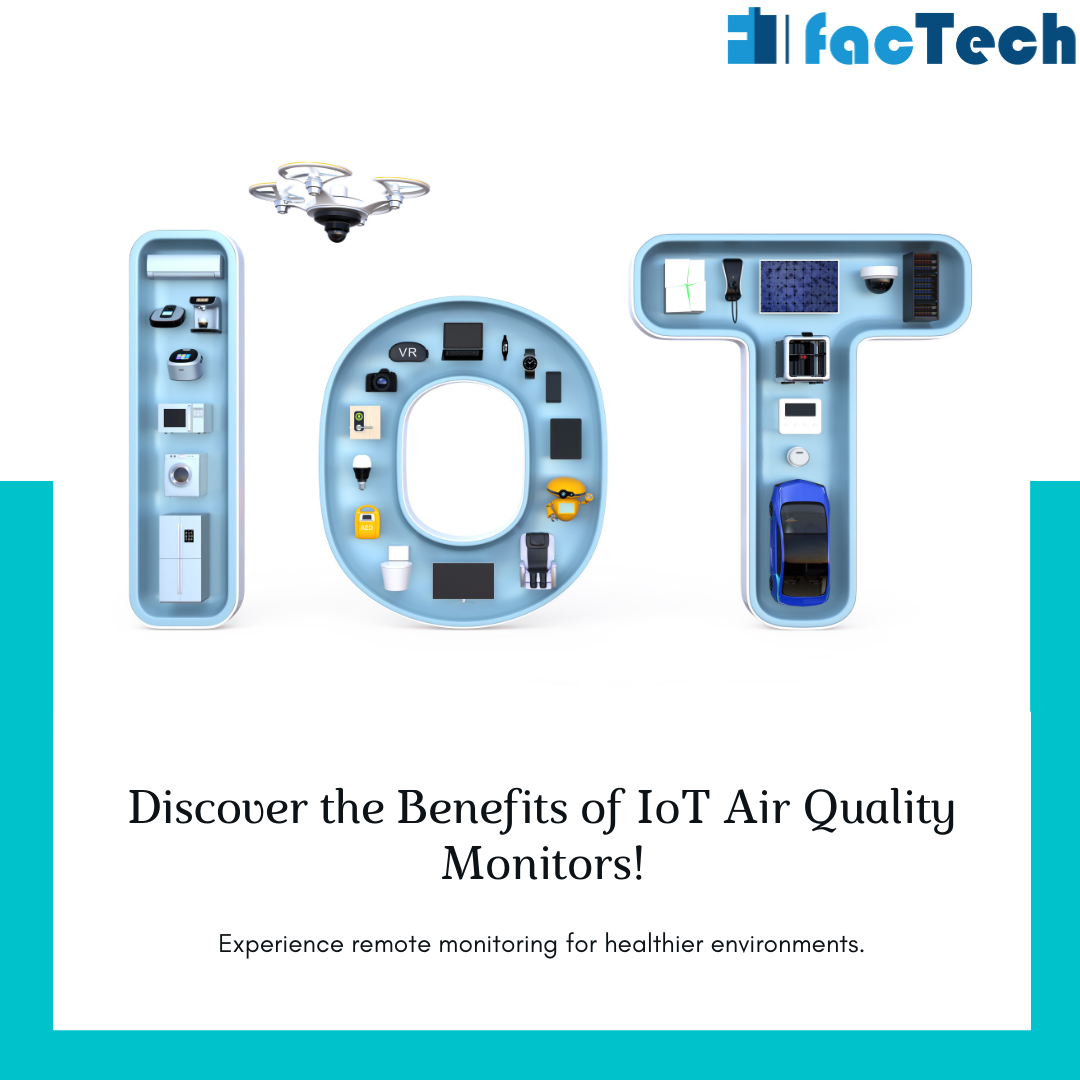
By letting you watch air quality from afar, an IoT indoor air quality monitor completely changes how air quality is managed, such as:
With its many monitors, this device keeps an eye on temperature, humidity, and pollutants like carbon dioxide and volatile organic compounds (VOCs).
The cool thing about it is that it can send this info wirelessly to a cloud platform. This lets people get real-time readings of the air quality through a web app or a smartphone app, from anywhere and at any time.
With this remote tracking, users can find problems with the air quality and fix them, like opening windows or turning on air purifiers, even when they’re not at the location.
Notifications and alerts: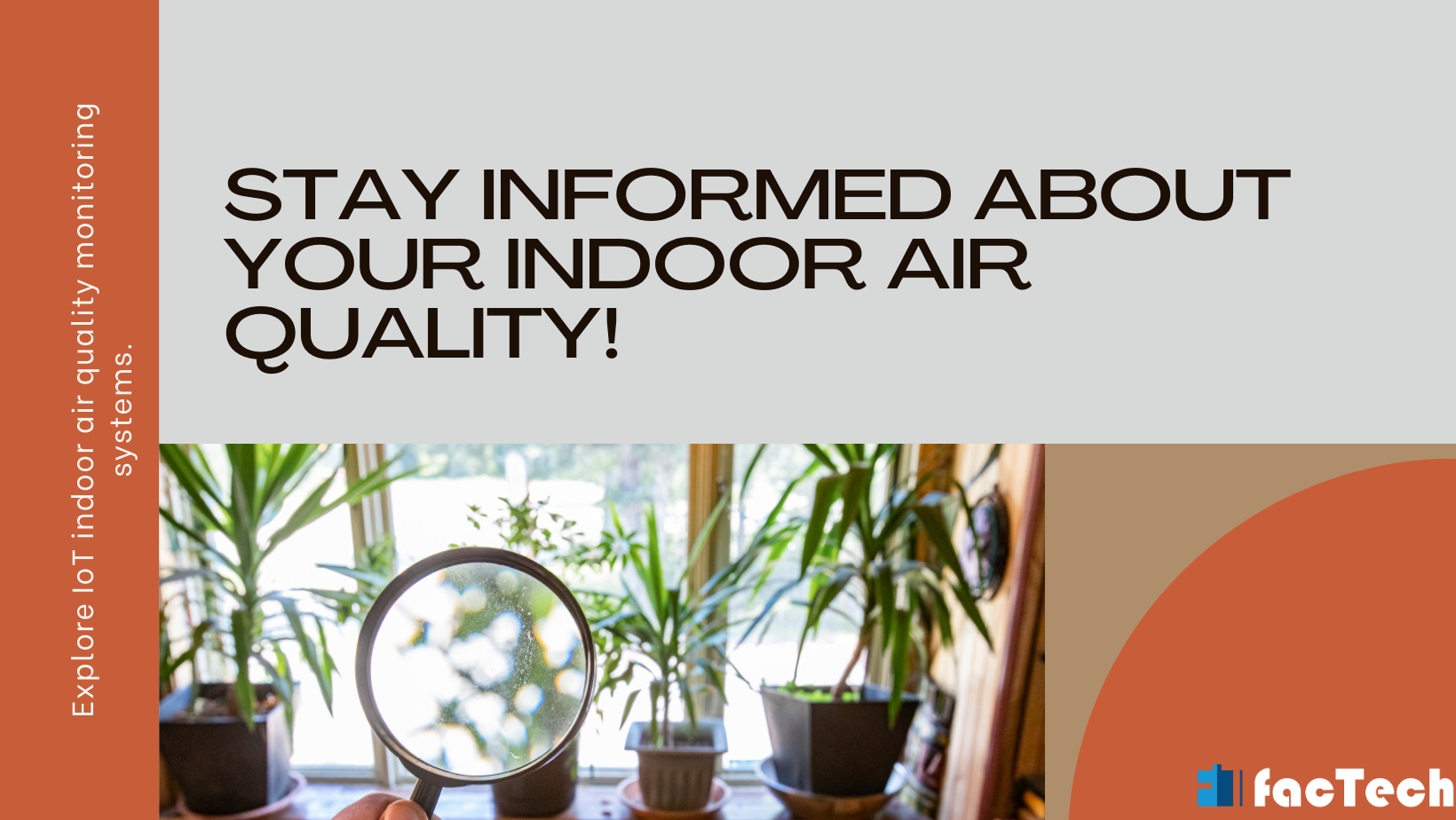
An IoT indoor air quality monitor can provide peace of mind by keeping you informed about the air you breathe in the following ways:
These devices not only track pollutants like dust particles and volatile organic compounds (VOCs), but also send notifications and alerts when air quality levels fall outside of healthy ranges. Imagine receiving a notification on your phone that CO2 levels are rising in your home, prompting you to open a window for ventilation.
This real-time feedback allows you to take immediate action to improve your indoor air quality and create a healthier living environment.
Keeping track of data and trends:
IoT indoor air quality monitors provide a powerful tool for keeping track of your home’s atmosphere in these ways:
These devices continuously measure pollutants, temperature, and humidity, sending the data to a user-friendly app. By tracking this data over time, you can identify trends. For instance, you might see spikes in CO2 levels coinciding with increased occupancy, or humidity levels rise during colder months.
These valuable insight allows you to make informed decisions about ventilation, air purification, and overall indoor air quality management for a healthier and more comfortable living environment.
How to pick the best IoT air quality monitor: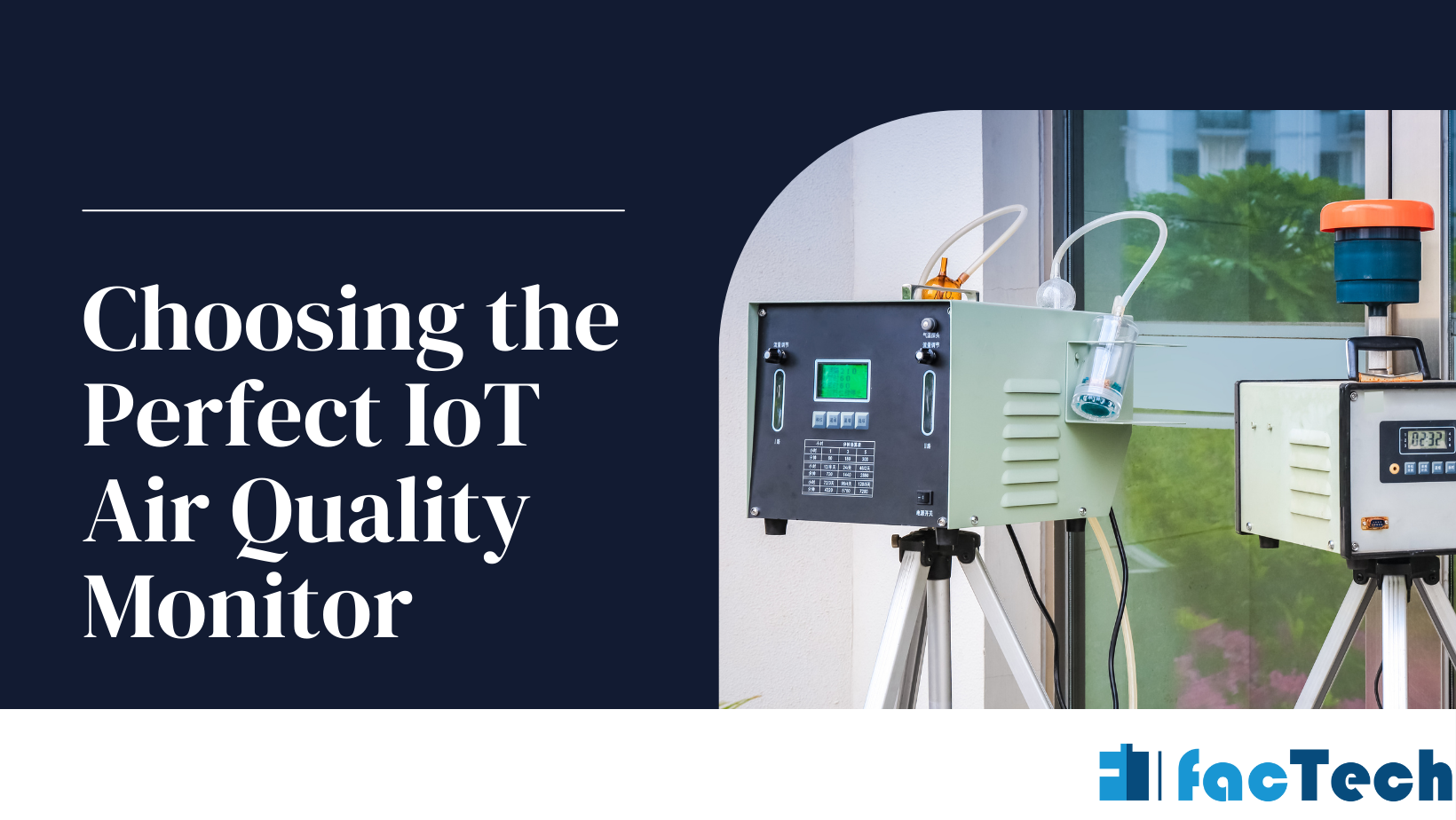
There are many different types of IoT air quality monitors, each with its own set of functions and price range. When picking a monitor, think about these things:
What pollutants do you want to measure? Choose the air quality measures that are most important to you.
Options for connecting: Pick a gadget that can connect to Wi-Fi or Bluetooth so it’s easy to add to your smart facility system.
Ease of use: Look for a device that is easy to use, with clear data visualization and settings that are easy to understand.
Compatibility with smart facilities:
There’s more to the idea of a “smart facility” than just automation and remote control. It has to do with making a place where people’s health and well-being come first. IoT (Internet of Things) home air quality monitors are very important for this reason.
Uses:
IoT air quality monitors work with smart building control systems without any problems. This compatibility opens up a lot of perks, such as:
Data-Driven Insights:
Information about the air quality is combined with data from other sensors in the building, such as those that control the lights and temperature. This big-picture view lets building managers see patterns and find places where the air quality is bad.
Smart systems can be set up to take steps automatically based on readings of the air quality. For instance, higher CO2 levels might cause air filtration or better airflow to be turned on.
Better Comfort for Occupants: Real-time data on air quality gives Occupants the power to make smart choices. They can change the settings for airflow or do things to cut down on pollution, like opening windows.
Preventative Maintenance: Finding problems with the air quality early on lets people fix them quickly. This proactive method can cut down on the number of repairs that need to be done after the fact and extend the useful life of all the equipment in the smart facility.
Picking the Best Monitor for Your Smart Building
Coverage of Sensors: Think about the toxins that you are worried about in your building. Some monitors only measure CO2 and VOCs, while others have PM sensors for more thorough tracking.
Connectivity: Make sure it works with the smart building network you already have. Wi-Fi, Bluetooth, and Low Power Wide Area Networks (LPWAN) are all common choices.
Data Security: To keep private data safe, pick a device that puts data security first and uses encryption methods.
User Interface: A mobile app or web interface that is easy to use makes it simple to see data, look for trends, and handle alerts.
Conclusion:
An IoT indoor air quality monitor is a great way to take charge of the air quality in your facility and make it easier to breathe. You can make your facility healthier and more comfortable for you and your family by keeping an eye on and fixing problems with the air quality.
